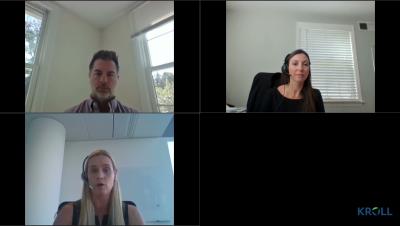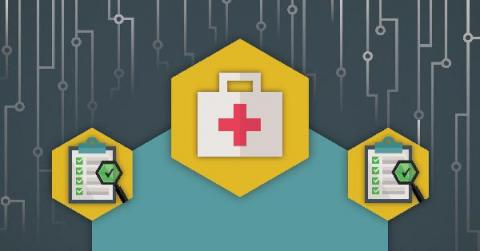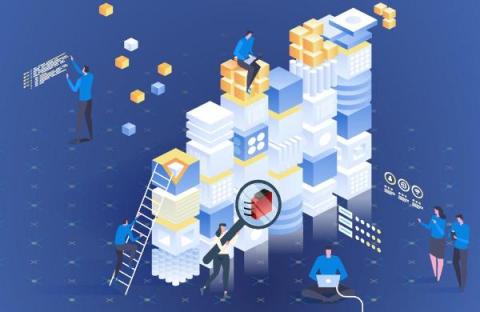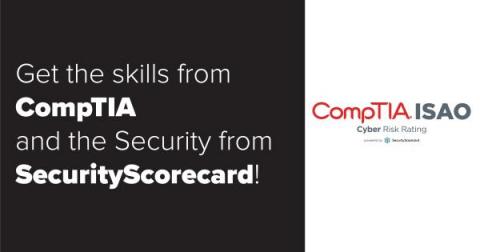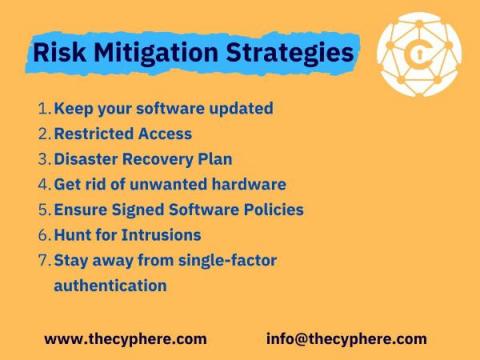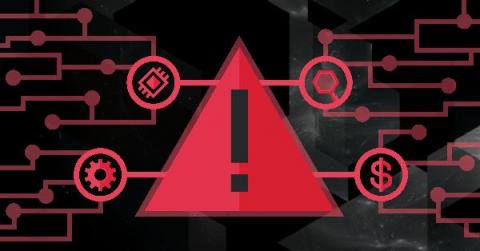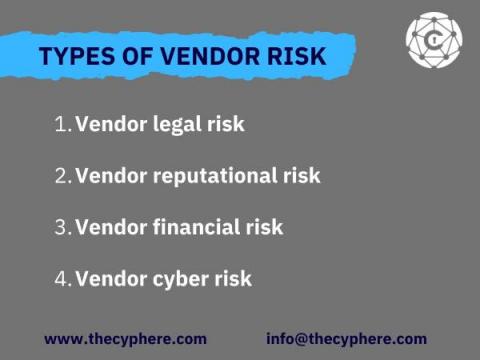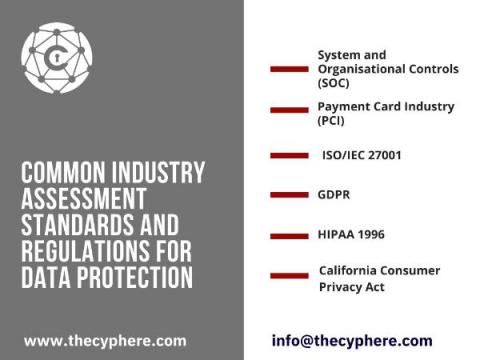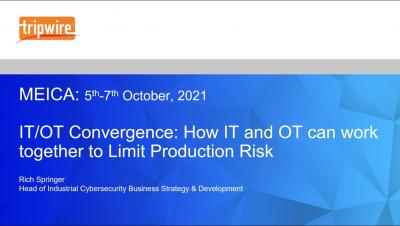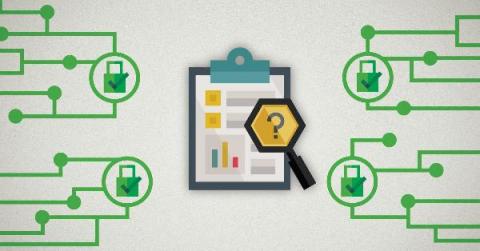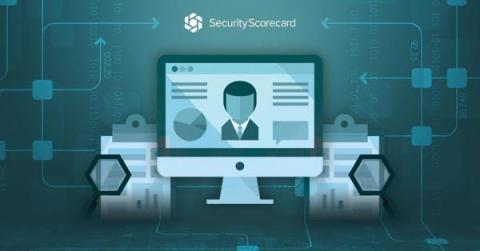Security | Threat Detection | Cyberattacks | DevSecOps | Compliance
October 2021
What is a DDoS Attack & How to Protect Your Site
Cybersecurity threats evolve constantly, and it’s difficult for any organization to stay ahead of emerging risks. A company’s best defense against security breaches is to understand the tactics that hackers use, and then plan accordingly. In this post we’ll examine one of the common kinds of cyber attacks — a DDoS attack — and discuss how best to protect your network infrastructure.
What is an SBOM and How is it Different from a CBOM?
In May 2021, President Joe Biden signed an executive order (EO) aiming to strengthen America’s cybersecurity. One key point in the EO was the need to improve software supply chain security, and reduce the vulnerabilities that allow adversaries to launch cyberattacks against public and private organizations.
Cybersecurity Best Practices for Companies
The modern threat landscape has evolved enormously in the past few years. Cybercriminals launch increasingly sophisticated attacks, and these attacks have only gotten worse since the arrival of the COVID-19 pandemic and the move to remote work.
Identity Access Management Best Practices
In today’s unpredictable business environment, it’s more important than ever that your organization is protected against cybercrime. One of the best ways to ensure that your data is safe is to enforce identity and access management (IAM) — a method for defining the roles and privileges of individual users within your network.
5 Common Cybersecurity Vulnerabilities in the IoMT
Have you been to the hospital lately? If so, you’ve probably been attached to at least one medical device with at least some sort of internet access. According to Cisco, the average hospital room has, on average, 15-20 connected devices, with an average of 6.2 cybersecurity vulnerabilities between them.
What You Need to Know About Code Risk Management
Risk management of code is an important and often overlooked development function that you need to pay attention to. You may think that this is not a developer’s problem, however developers should not write code that unduly adds to technical debt, hence the need to manage risk. The primary motivation for risk management is to prevent error or failure. Do not seek to eliminate failure, seek to minimise it, to manage the risk of failure.
[CompTIA ISAO & SecurityScorecard Partnership] 2 Key Business Essentials to Build Cyber Resilience
Viruses are the hot topic of 2021. We’re not just talking about the COVID-19 virus. Computer viruses, identity theft, and threat actors are no longer just the subject of sci-fi films and crime shows, but a reality of running a business. More than ever, cybersecurity is top of mind for business leaders. Whether you are a Fortune-500 Company or just launching your first venture, no business is too big or too small to escape the realities of today’s cyber threats.
7 Proven Cybersecurity Risk Mitigation Strategies
Cybersecurity is one of the essential tasks for any business. It’s not just a matter of protecting your company’s data and information from external threats, but also ensuring that it remains robust to internal ones. All three, i.e. people, processes and technology, are your greatest asset. If they are not embedded and managed throughout the organisation, you can expect that they will inadvertently put your sensitive data at risk.
Incident Response Plan vs. Disaster Recovery Plan
When developing business continuity plans, businesses should understand that they actually need two documents: an incident response plan and a disaster recovery plan. Having an incident response plan means your organization is prepared for possible information security incidents such as a data breach, a system outage, or a security breach.
What Are the Differences Between FedRAMP and FISMA?
In today’s complex regulatory environment, organizations need to maintain compliance with numerous regulations. Two important cybersecurity-related compliance standards in the United States are the Federal Risk and Authorization Management Program (FedRAMP) and the Federal Information Security Management Act (FISMA). Although these two regulations do have similarities, they have several notable differences as well. This post will explore where FedRAMP and FISMA do, and don’t, overlap.
PCAOB Alert on Audits, External Data
The PCAOB published fresh guidance last week about how auditors should handle evidence supplied by others to help the auditor assess financial statements, important performance or valuation metrics, and, well, all the other stuff that can go into an audit report these days.
Steps to Performing Your SOX Risk Assessment
Companies around the world have experienced tremendous changes. For publicly traded companies, those changes can bring new considerations into the frame for your Sarbanes-Oxley risk assessment. Shifts in strategy plans and a new remote, paperless way of operations could require major updates in your SOX compliance program. In this post we’ll discuss Sarbanes-Oxley in detail and outline a step-by-step method to perform the SOX risk assessment effectively.
The Evolution of Cybersecurity Solutions and Threats
In 1970, the world experienced its first “cyber attack” – What first started as a harmless joke, paved the way for a new wave of criminality - cybercrime. Since then, attacks have become more sophisticated with the use of malware, ransomware, and phishing attacks, among many others. In fact, according to Security Magazine, today’s hackers attack computers with Internet access every 39 seconds on average.
What is Vendor Risk Management? Your go to VRM guide
Vendor risk management (VRM) is the type of risk management practice assessing and mitigating business partners, third parties, or external vendors. This process is conducted before an entity enters into a business relationship and during the duration of the business contract with the vendor.
Vendor Risk Management: Best Practices for 2021
Vendor risk management (VRM) is rapidly emerging with ever-evolving cyber security strategies. As we hit the pandemic and try to manage critical operations in a remote work setup, each day, business entities challenge with the new security, privacy, and business continuity risks associated with their vendors.
Regulatory Compliance in Healthcare
Every day healthcare providers must undertake the nerve-racking task of complying with an increasing number of healthcare regulations. According to one report, the healthcare industry spends nearly $39 billion every year on the administrative burdens of regulatory compliance. Today healthcare organizations must comply with more than 600 regulatory requirements.
Brady Technologies acquires Igloo Trading Solutions to accelerate growth in European energy markets
What is Ransomware and How Do You Remove It?
Someone in your organization gets an email with an attached document. The sender seems legitimate, but when they click on the link, it’s not what it claims to be. Soon your organization’s data is encrypted and you receive a message: pay a ransom to the attackers if you want the decryption key. You’ve just been the victim of a ransomware attack. Ransomware has become a major attack vector in 2021.
Cyber attacks: the risk your small business can't afford
As we’ve all learned, often the hard way, amazing tech has introduced not-so-amazing risks: viruses, hacks, and leaks, to name a few. A data breach or cyber attack can happen at any moment, to individuals or businesses of any size – and attackers do not discriminate.
How to Create a Data-Centric Security Model
Information security used to revolve around securing the locations where sensitive data was stored. Now, with the rise of cloud computing, data can be stored and transferred in an infinite number of ways — making it nearly impossible to protect against data breaches for every single device. The best solution for modern times, then, is a data-centric security model.
5 Step Risk Management Process
At its core, risk management is about identifying risks and guarding against them. It gives organizations a plan of action to determine which risks are worth taking and which aren’t, to assure better outcomes for their bottom lines. In this post we’ll outline the five steps of risk management, which you can use to protect your company against the uncertainties of doing business.
Lunch & Learn: Navigating Increased Transactional Risk Scrutiny
IT/OT Convergence: How IT and OT Can Work Together to Limit Production Risk
What Pandemic Responses Teach Us About Cybersecurity
I’ve been working at Tripwire for over two decades, and I’ve acquired a fair bit of swag over those years: branded jackets, hats, shoes, a watch, and of course a drawer full of t-shirts. One thing I never would have predicted owning was a Tripwire-branded face mask to protect me from a global pandemic. Over the past year, I’ve worn that face mask more than any of my other swag. Of course, none of my other swag protected me and others from a highly contagious, deadly virus.
Key Takeaways From the NIST Ransomware Risk Management Profile
Ransomware groups have generated so much damage that the United States Federal government has made it a top priority to thwart such efforts including, hosting a major international summit on the topic, setting up a ransomware task force and repeatedly urging organizations to improve their cyber resilience.
How to Identify and Classify High-Risk Third Parties
Today’s business landscape means having various business partners. From contractors to technology vendors, third parties are now part of everyone’s daily operations. However, with every new third-party you onboard, you also add a new risk. Supply chain attacks compromise your data, even if the third-party isn’t providing you a technology solution. To secure your data, you need to identify and classify high-risk third parties.
Can MDR Solve the Cybersecurity Crisis?
Public vs. Private Cloud Security: What's the Difference?
Security in cloud computing is often a major concern among cloud customers, mainly because of the risk of losing sensitive data and the difficulties of enforcing the organization’s security policies. Despite cloud computing’s potential efficiency for storing and exchanging files, cloud security remains questionable. According to one report from Statista, 81 percent of respondents found security to be the most prevalent challenge in cloud computing today.
What is Fourth-Party Risk?
Outsourcing is a critical part of business management and an important ingredient in business growth. One business outsources some task to another — but that second firm can also delegate some of its own business processes to yet another company. That last company then becomes a fourth-party to the first. As the role of fourth-party vendors expands, having a vendor risk management strategy in place becomes key to organizational success.
How Data-Centric Security Models Build Cyber Resiliency
A data-centric security model moves your cybersecurity away from protecting the place where your data is stored to focus instead on securing the data itself. With cloud computing, there no longer is a single perimeter within which to secure your sensitive information. By protecting the data itself, you assure that no matter where the data goes, your organization is protected against cyber threats.
Security vs. Compliance: Understanding the Differences
As cyberattacks continue to proliferate, it’s clear that organizations must be prepared from both cybersecurity and compliance standpoints. It’s critical, however, to understand that while data security and compliance are both important for risk management and the prevention and mitigation of cyber attacks, the two concepts are definitely not the same.
How to Manage Risk With Internal Control Monitoring
Strong, effective internal controls are crucial to developing an efficient operating environment that drives business growth. Good internal control activities can help organizations deliver value to stakeholders and achieve strategic objectives, while also assuring compliance with applicable laws, regulations, and industry best practices. This guide will take a deeper look into internal controls monitoring, along with suggestions for how to make the process easier.
4 Reasons Why Cybersecurity is Important in Banking
Organized cybercriminals are leaving traditional bank robbers in the dust. Nowadays, the banking sector’s most significant security concerns come in the form of online threats. Banks and other financial institutions process millions of transactions daily, with the majority of the transactions done via digital payment transfer platforms. For that reason, banks have become enticing targets for cybercriminals.
Making the Most of Digital Risk Protection in Today's Threat Landscape
Avoiding Cyber Security False Positives
Today’s organizations are vulnerable to all kinds of cyberattacks, which NIST (the National Institute of Standards & Technology) defines as an event that disrupts, disables, destroys, or maliciously controls a computing environment, destroys data integrity, or steals controlled information. Expert security teams know that attackers might compromise the enterprise network, systems, or applications; or steal data at any time through any number of means.
What is Privileged Access Management (PAM)? Definition & Examples
As organizations migrate to the cloud and adopt more “as-a-Service” technologies, identity and access have become the perimeter. Remote workforces mean that limiting access according to the principle of least privilege is a fundamental security control. As part of securing applications and networks, organizations need to focus on users with privileged access because they pose greater insider and credential theft risks.
Breaking it Down: The Difference Between InfoSec Compliance Types
Compliance is an essential part of any business. From a corporate perspective, it can be defined as ensuring your company and employees follow all laws, regulations, standards, policies and ethical practices that apply to your organization. In the context of information security, it means ensuring your organization meets the standards for data privacy and security that apply to your specific industry.
Risk Control Measures That Work
Conducting a regular risk assessment is an integral part of any organization’s overall risk management program — and sometimes even a legal requirement, depending on your industry, contractual obligations, or the number of persons you employ. A risk assessment is the systematic process of identifying threats or hazards in your work environment, evaluating the potential severity of those risks, and then implementing reasonable control measures to mitigate or remediate the risks.
How Hackers Exploit Passive and Active Attack Vectors
Learn about the methods cybercriminals use to exploit passive and active attack vectors so you can better protect your business or organization from cyberattacks. Cybercriminals will use any means they can to penetrate your corporate IT assets and exploit any vulnerabilities they find. Your ability to predict and prepare for these incidents could mean the difference between preventing a data breach and recovering from one.
The Different Types of Risk Assessment Methodologies
Risk is inherent to all businesses, regardless of your industry — and to prevent those risks from causing harm, you must first know what threats you are facing. The foundation of any successful risk management program is a thorough risk assessment, which can take many forms depending on what methodology best suits your needs.
3 Tips to Building a Risk-Aware Culture
Enterprise organizations and government agencies worldwide are focused on strengthening their computer networks against the risk of a cyberattack. However, a cybersecurity program is only as strong as its weakest link – and that link is often an employee. Yes, employees remain the biggest cybersecurity threat today. So, in addition to putting the right security controls and tools in place, your Information Security team needs to create a more risk-aware culture.
Learn About the Digital Operational Resilience Act
Around the world, and particularly over the past few years, regulators have been looking for ways to strengthen the resilience of the financial sector. In the European Union, regulators within the European Commission (EC) have taken a concrete step to meet this objective through the Digital Operational Resilience Act (DORA). The EC published a draft version of DORA in September 2020.
What Does a Business Continuity Plan Typically Include?
It’s impossible to predict every risk that could affect your organization. Cyber attacks, ransomware, natural disasters, and power outages are all potential threats that could disrupt your business. While prevention is key, you must prepare for interruptions to your daily operations. That is why a business continuity plan — a detailed plan that explains how your company will continue to operate in the event of a disruption — is so crucial for your risk management program.
Assessing Cyber Risk: 13 Critical Questions for the Board
Boards of Directors constantly need to be educated about and aware of their organizations’ cybersecurity posture. Regulations hold them responsible for decision-making and governance. Meanwhile, increased ransomware attacks pose a financial risk to their shareholders. To enhance the risk analysis, questions like these can provide visibility into the company’s strategy.
Global Companies and Geopolitical Risk Management
As the COVID pandemic swept the world in 2020 and changed the way we travel and do business, other disruptions happened too: large wildfires driven by climate change, and a volatile domestic political scene pressured corporate policies over diversity and other social issues — and that’s just what happened in the United States.
Data Exfiltration: What It Is and How to Prevent It
Protecting your data is an important component of your cyber risk management plan, and one that involves a certain level of preparedness for an event like a data breach. Even the best cybersecurity efforts, however, will still fail at some point — when attackers abscond with your organization’s confidential data, either to resell it on the dark web or to post it for all the world to see.
What are Threat Intelligence Feeds?
Threat intelligence feeds enable organizations to stay informed about indicators of compromise (IoCs) related to various threats that could adversely affect the network. These feeds also help to inform tools like SecurityScorecard’s Security Data by providing a source of information to collect, analyze and share with customers.
Customer Corner: RCBC Bank CTO on Balancing Risk and Innovation
Rizal Commercial Banking Corporation (RCBC) begun as a small development bank in the Philippines and has grown to encompass a wide range of financial services and branches in the U.S., Europe, Australia and New Zealand. Like any financial institution, it must comply with a host of regulations and is a prime target for malicious actors.
Automating Vendor Risk Management
Modern supply chains are highly interconnected and complex. Today’s organizations leverage numerous third-party relationships to cut costs, speed up operations, and scale their businesses. But along with these benefits, organizations have to contend with the risks, particularly cybersecurity risks. One study found that in 2020, 44% of businesses suffered a data breach caused by a third party, and a data breach can cost $3.92 million on average.
What is Digital Risk Protection and Why Do You Need it?
The growing use of digital assets within a business delivers all sorts of operational benefits to the organization in question. These technology solutions, however, also come with numerous associated risks and an increased overall threat landscape. You can address these risks by investing in digital risk mitigation and remediation activities as part of a digital risk protection initiative.
Best Practices for Securing Your Cloud Service
The popularity of cloud services has soared in recent years, as ever more companies move towards a remote or hybrid workplace model. While cloud computing comes with many benefits, it can also create new vulnerabilities that might give criminals access to your sensitive data. If your company is using cloud technology, you need to make sure that your data is secure. Keep reading to learn what threats affect cloud services and what you can do to keep your cloud safe.
Top Threat Modeling Methodologies
Find out how different threat modeling methods can help your business catalog potential threats and find solutions for threat mitigation. The most important element of the risk management process is the ability to identify and prioritize threats to your organization’s cybersecurity before any damage occurs. How rapidly you can identify these threats will determine how quickly you’re able to find solutions for mitigation.


